Supporting Language Growth in AAC Learners: Part 2
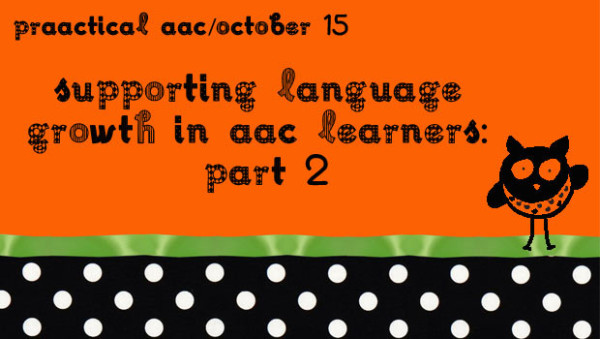
Last month, we began some musings about the sad reality that the percentage of people who use AAC to communicate in a grammatically correct fashion is woefully small. In that post, we explored some of the reasons for that and looked at conversations in which the communication partner does a lot of vertical scaffolding. While the term vertical scaffolding may be new to some of you, the concept is one with which you are quite familiar. Here’s an example:
Scenarios like this are very common in AAC, especially among communicators who use their AAC to say 1-2 words at a time. Because their language is so limited, the clinician follows each utterance with a question in an attempt to determine what the learner is trying to convey. While this style can be an effective means of figuring out what they learner is trying to tell us, it doesn’t do much to advance language development.
When our goal is to spur language growth, a different approach is needed. Here are some thoughts on how to make that transition.
To start with, we have to be prepared to enter the interaction with 1-2 priorities, and be willing to sacrifice the rest. These are our non-negotiable, “must do,” top-priority goals for the communicative exchange. Everything else is expendable. You can read more about that concept here.
When working with learners like this, some common language goal priorities are things like expanding sentence length and creating subject-verb and verb-object sentences.
Here’s what that scenario might look like if our focus were building those skills.
Here’s one way to think about the contrast in the two scenarios: The first example is conversation; The second is therapy.
In this second example, the flavor of the conversation changes from one driven by meaning and efficiency to a focus on meaning and language learning. This works really well when the AAC learner is highly motivated to tell us about a certain topic.
There are certainly downsides to this approach. We need to know which intervention strategies to apply. Independence is sacrificed in order to practice more advanced language. We have to use prompts skillfully. It takes longer to do this and we are ALWAYS pressed for time. But when we DON’T take the time to do these kinds of things, language development suffers. It’s okay to take the time. We.do.therapy.
Filed under: PrAACtical Thinking
Tagged With: language intervention, language therapy
This post was written by Carole Zangari

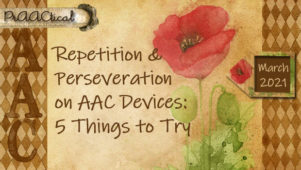
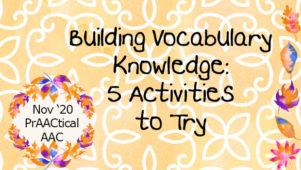
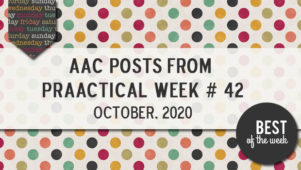
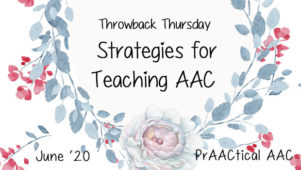
5 Comments
Thanks Carole – you explain that so well! It makes sense and is something I need to do more of 🙂
I think we all feel that way, Jane. We just keep plugging away. 🙂 Progress not perfection, right?!
After many years of playing the “questioner”. I discovered a lot more meaningful interactions using pragmatic branch starters that the PODD system provides. It gives both, the speaker and the partner a place to hang the meaning of those one word utterances. Its so hard not to try to decipher the meaning by asking 20 questions.
Thanks for posting this.
Wonderful! Please let me know if you would like to do a guest post on your experiences. We can all learn from each other!
would love to!